ChatGPT:
Dijon, the capital city of the Burgundy region in eastern France, is renowned for its rich history, exquisite architecture, and vibrant culinary scene. Once the seat of the powerful Dukes of Burgundy, Dijon boasts a well-preserved medieval city center filled with grand townhouses, impressive churches, and charming squares.
The city’s most iconic landmarks include the Palace of the Dukes and Estates of Burgundy, which houses the Musée des Beaux-Arts, and the Church of Notre-Dame, known for its unique gargoyles and the famous “Owl” carving, a symbol of good luck. Dijon is also famous for its mustard, and you can find numerous shops offering a wide variety of flavors.
Dijon plays host to several festivals, such as the International Gastronomy Fair, which attracts food lovers from all over. The city’s streets are lined with cafes, restaurants, and wine bars, where you can enjoy local specialties like coq au vin and Burgundy wines.
The surrounding region is equally notable, with its picturesque vineyards producing some of the world’s finest wines, such as Pinot Noir and Chardonnay. The city is also a gateway to exploring the Burgundy wine route, offering a taste of France’s esteemed winemaking heritage.
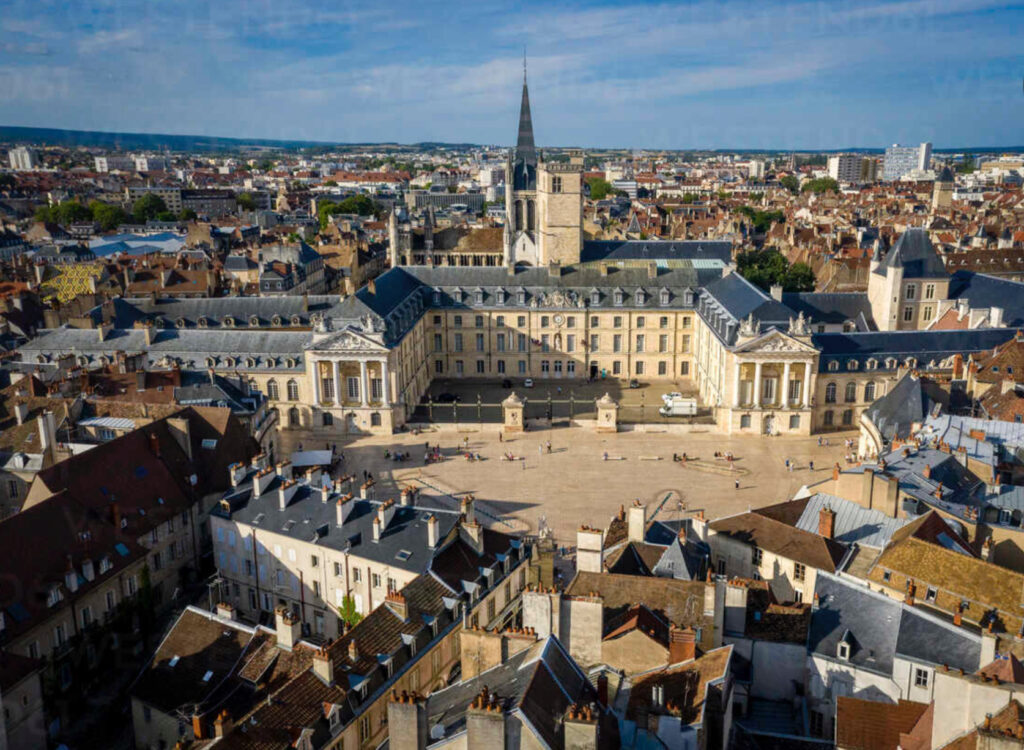
Origin and Early History
Dijon, originally known as Divio, has ancient roots dating back to Roman times. The area was initially a settlement along the road connecting Lyon and Paris, strategically located near the confluence of the Ouche and Suzon rivers. The settlement’s location made it a crucial point for trade and military movements in the Roman Empire. However, Dijon only began to develop into a significant town during the later stages of the Roman Empire, as it became more established as a crossroads for several major routes.
Medieval Development
Dijon’s transformation from a small settlement to a thriving medieval town began in earnest in the 11th century. This period saw the rise of the Dukes of Burgundy, one of the most powerful and influential dynasties in medieval Europe. Under the rule of the Dukes, particularly during the 14th and 15th centuries, Dijon flourished as the capital of the Duchy of Burgundy. The dukes were patrons of the arts, culture, and architecture, turning Dijon into a center of political power and cultural influence.
During this time, many of Dijon’s most famous buildings were constructed, including the Palace of the Dukes of Burgundy and several grand churches, such as the Church of Notre-Dame and the Cathedral of Saint-Bénigne. The city’s fortifications were expanded, and Dijon became a hub for trade, particularly in wine and mustard, which would later become symbolic of the city’s identity.
Renaissance and Modern Era
The Burgundian state reached its zenith in the 15th century, and Dijon was at the heart of its power. However, the death of Charles the Bold, the last Duke of Burgundy, in 1477 led to the duchy’s annexation by France. Despite this political shift, Dijon continued to thrive as a provincial capital within the French kingdom. The city benefited from the Renaissance’s cultural and intellectual movements, with many of its medieval structures either preserved or repurposed, and new architectural styles being introduced.
The following centuries saw Dijon maintain its status as an important administrative and cultural center. The city became known for its university, founded in 1722, and its contribution to French gastronomy, particularly with the development of Dijon mustard, which became renowned across Europe.
19th and 20th Century Expansion
The 19th century brought industrialization and modernization to Dijon, as it did to many French cities. The arrival of the railway in the mid-1800s spurred economic growth, making Dijon a key transportation hub in eastern France. The city expanded beyond its medieval walls, with new districts emerging to accommodate the growing population and industry.
Dijon also played a role during the tumultuous periods of French history, including the Franco-Prussian War, World War I, and World War II. The city was occupied by German forces during World War II but was liberated in September 1944. Despite the destruction that war brought, many of Dijon’s historical buildings survived, allowing the city to retain much of its architectural heritage.
Contemporary Dijon
Today, Dijon is a vibrant city that balances its rich historical legacy with modern development. It remains the capital of the Burgundy region, which has since been merged into the larger Bourgogne-Franche-Comté region. The city’s economy is diverse, with a strong emphasis on education, research, and gastronomy. Dijon is a key player in the wine industry, serving as a gateway to the Burgundy wine region, which produces some of the most prestigious wines in the world.
Dijon is also a cultural center, hosting various festivals, including the International Gastronomy Fair, which reflects its status as a culinary capital. The city’s historical center has been well-preserved, and in 2015, it was designated a UNESCO World Heritage site as part of the “Climats, terroirs of Burgundy,” recognizing the region’s wine-producing heritage.

Dijon is home to a wealth of historical monuments and tourist attractions, reflecting its rich heritage as the former capital of the Duchy of Burgundy. Below is a list of key historical monuments and attractions in Dijon, along with their dates of origin:
1. Palace of the Dukes and Estates of Burgundy (Palais des Ducs et des États de Bourgogne)
- Date: Originally 14th-15th century, with significant additions in the 17th-18th centuries.
- Description: This palace was the seat of the powerful Dukes of Burgundy and now houses the Museum of Fine Arts (Musée des Beaux-Arts), which features an extensive collection of art and historical artifacts, including the tombs of the Dukes.
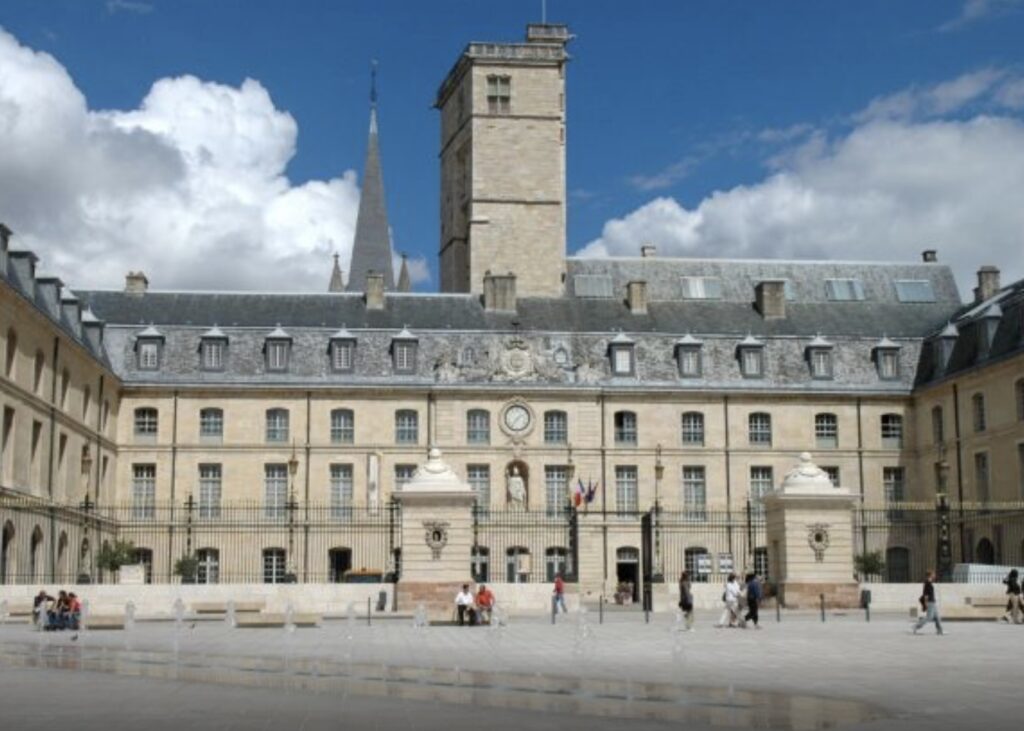
2. Church of Notre-Dame of Dijon (Église Notre-Dame)
- Date: 13th century (built between 1220 and 1240).
- Description: A stunning example of Gothic architecture, the church is famous for its façade with its unique gargoyles and the famous Chouette (Owl) carving on one of its walls, which is said to bring good luck when touched.
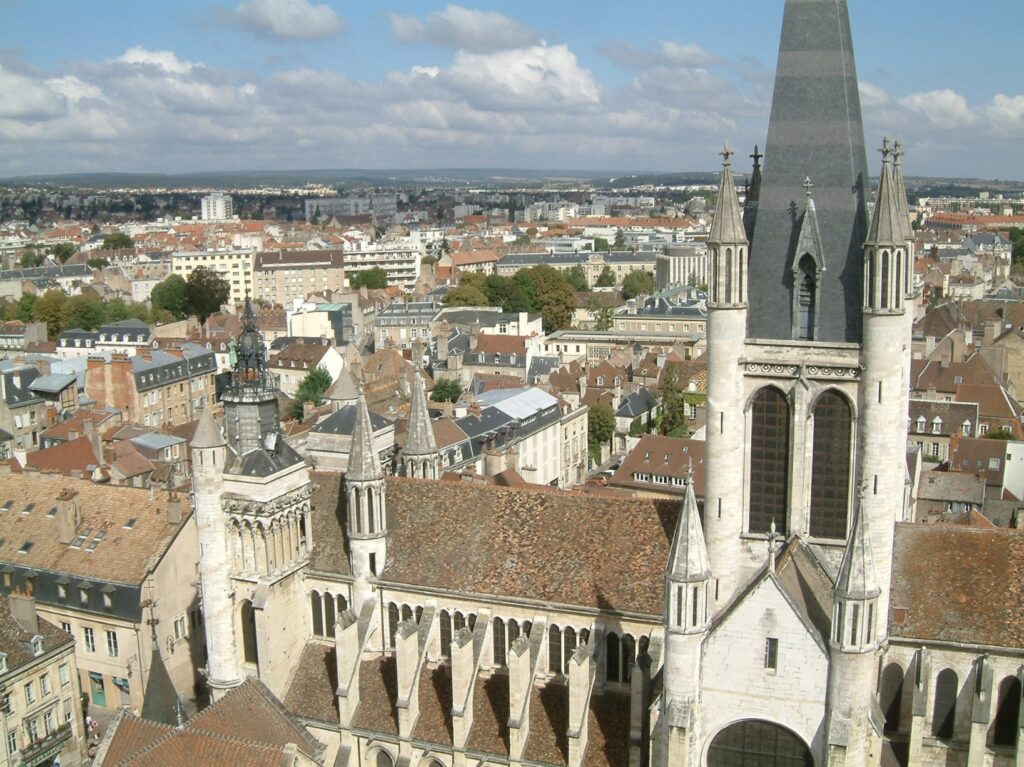
3. Dijon Cathedral (Cathédrale Saint-Bénigne de Dijon)
- Date: 13th century (construction began in 1280).
- Description: A Gothic cathedral dedicated to Saint Benignus, with a crypt that dates back to the early Christian period (6th century). The cathedral is notable for its tall spire and impressive stained-glass windows.
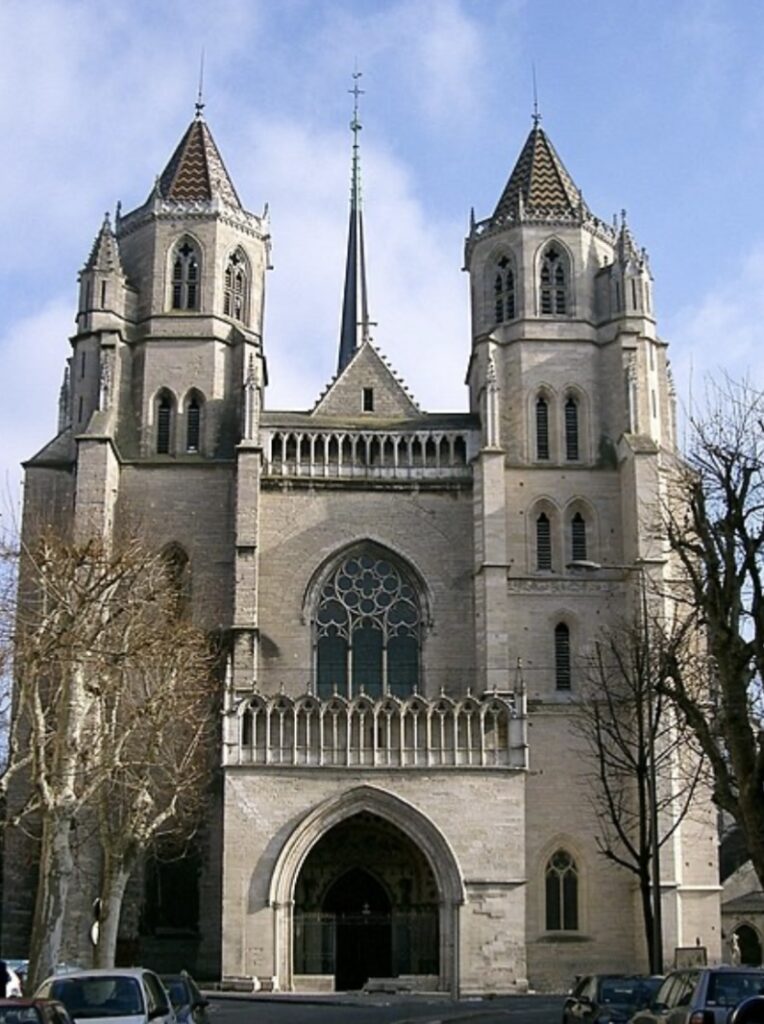
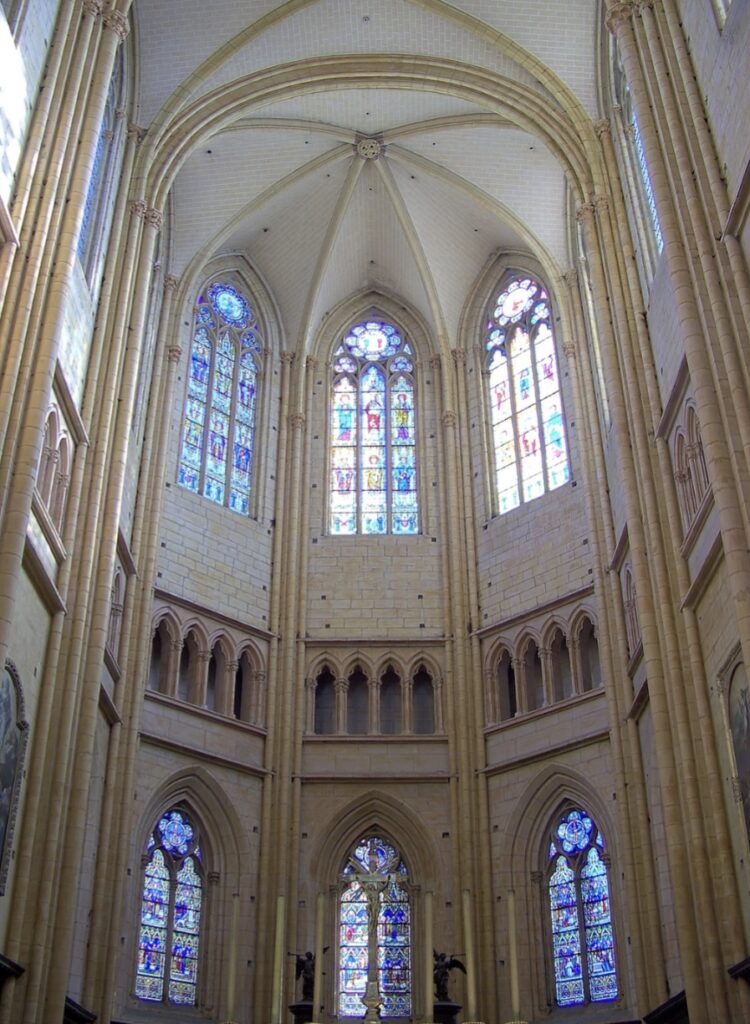
4. Church of Saint-Michel (Église Saint-Michel)
- Date: 15th-16th centuries (construction began in 1497, completed in 1529).
- Description: Known for its intricate façade combining Gothic and Renaissance elements, this church is also remarkable for its interior decoration and its 18th-century organ.
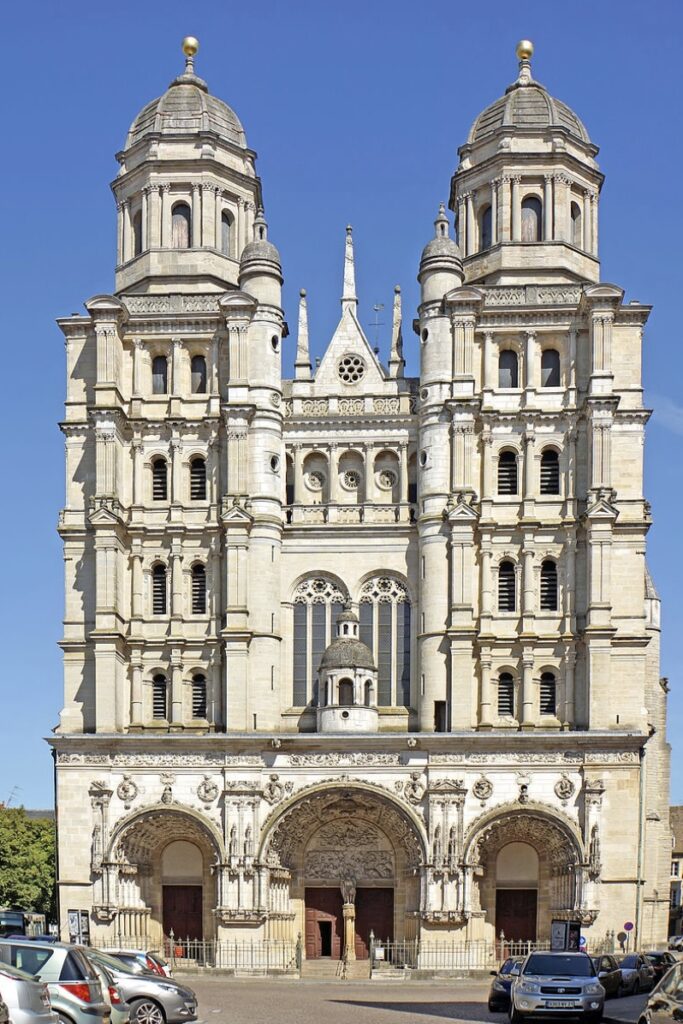
5. Museum of Burgundy Life (Musée de la Vie Bourguignonne
- Date: Housed in a former 17th-century monastery.
- Description: This museum offers insights into the traditional life and culture of Burgundy, featuring exhibits on local customs, crafts, and everyday life from the 18th to 20th centuries.
6. Museum of Sacred Art (Musée d’Art Sacré)
- Date: Located in the Church of Sainte-Anne, dating from the 17th century.
- Description: The museum displays religious artifacts, including sculptures, paintings, and liturgical objects from the region.
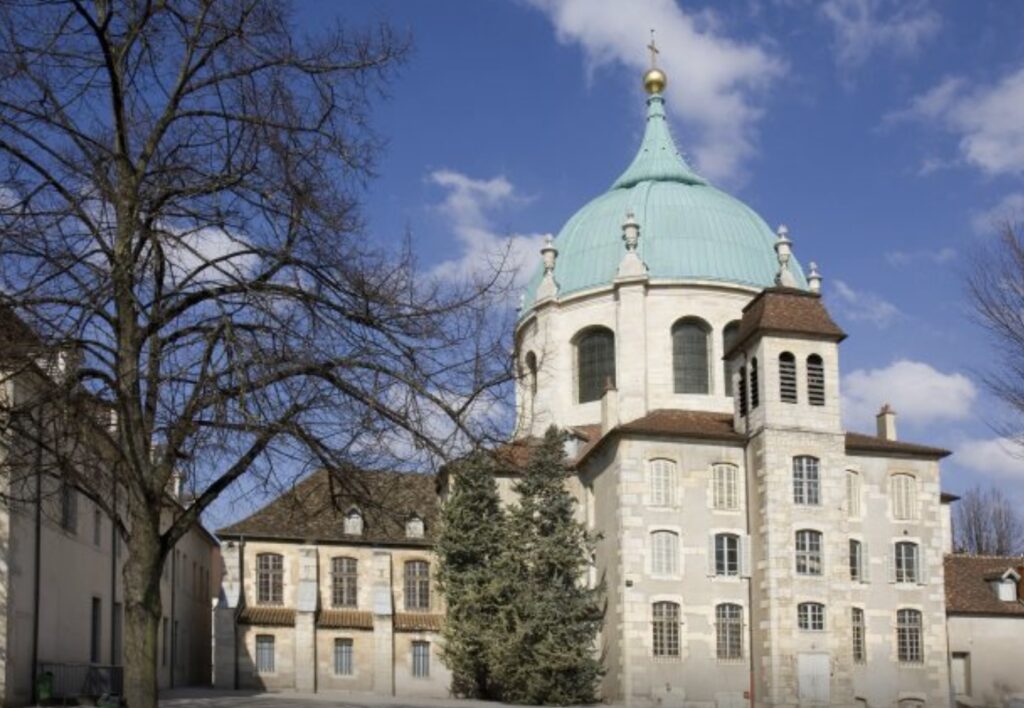
7. Place de la Libération
- Date: 17th century (designed by Jules Hardouin-Mansart).
- Description: A grand semicircular square in front of the Palace of the Dukes, it serves as one of the main public spaces in Dijon and is surrounded by historic buildings and cafes.
8. Ruelles des Antiquaires (Antiques District)
- Date: Medieval origins.
- Description: A charming area filled with narrow streets, medieval buildings, and antique shops, offering a glimpse into the old heart of Dijon.
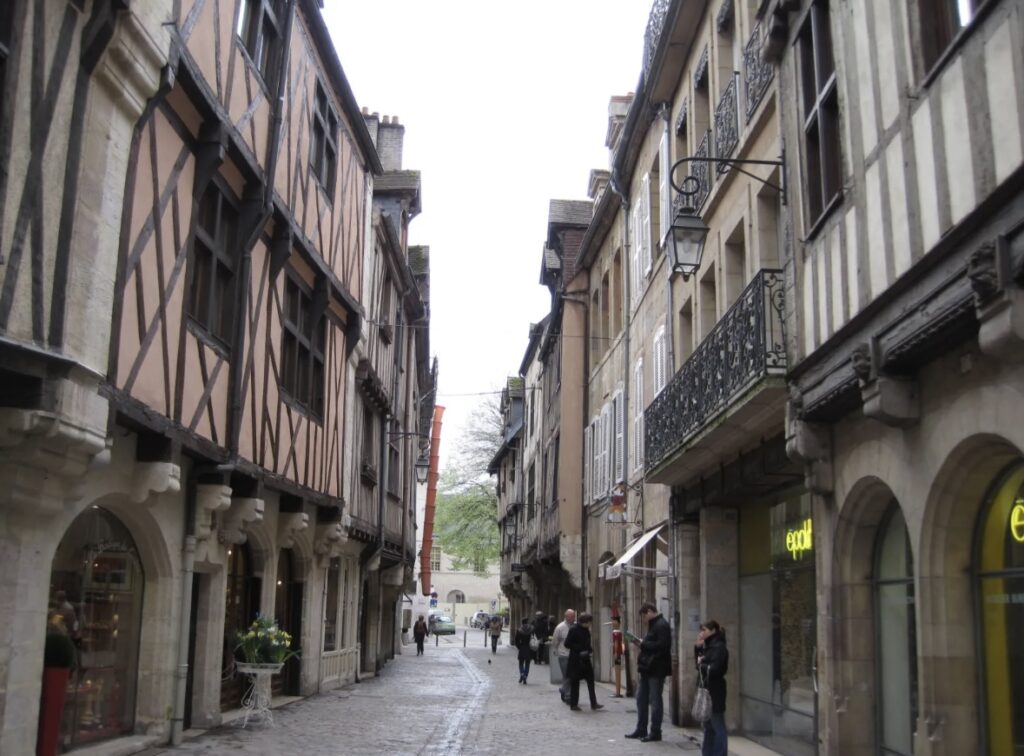
9. The Well of Moses (Puits de Moïse)
- Date: 1395-1405.
- Description: A masterpiece of Burgundian sculpture by Claus Sluter, this hexagonal structure was originally the base of a large crucifixion scene and is located at the former Carthusian monastery of Champmol.
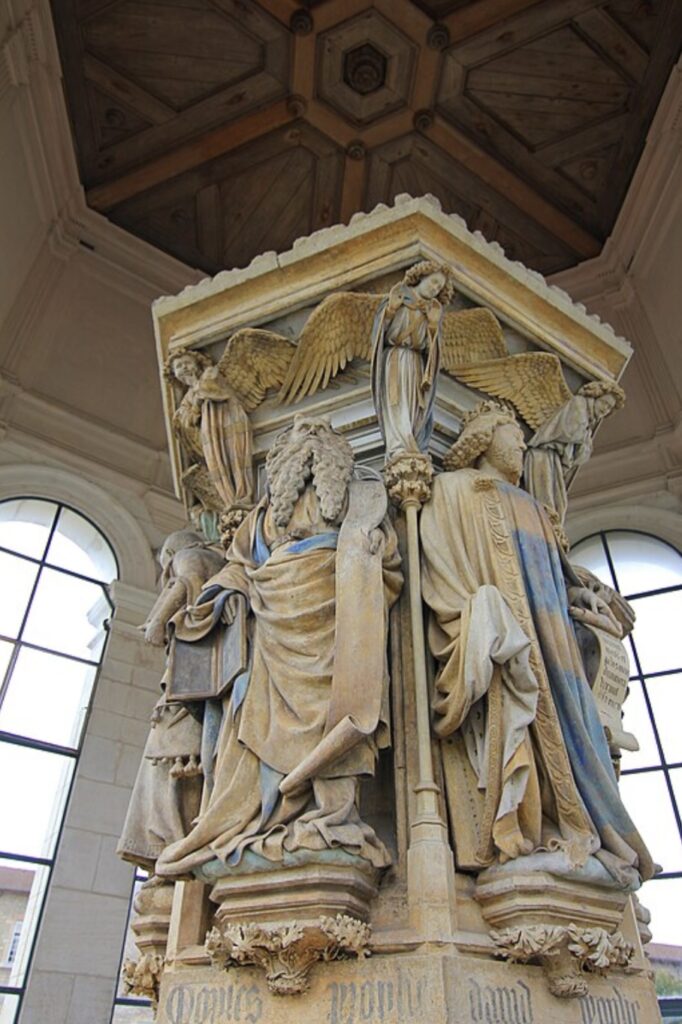
10. Dijon Botanical Garden (Jardin Botanique de l’Arquebuse)
- Date: Founded in the early 18th century.
- Description: A beautiful botanical garden featuring a wide variety of plants, a museum of natural history, and an arboretum, perfect for leisurely walks.

11. La Maison des Cariatides
- Date: 17th century.
- Description: A historic townhouse known for its striking façade adorned with caryatids (sculpted female figures serving as architectural supports).
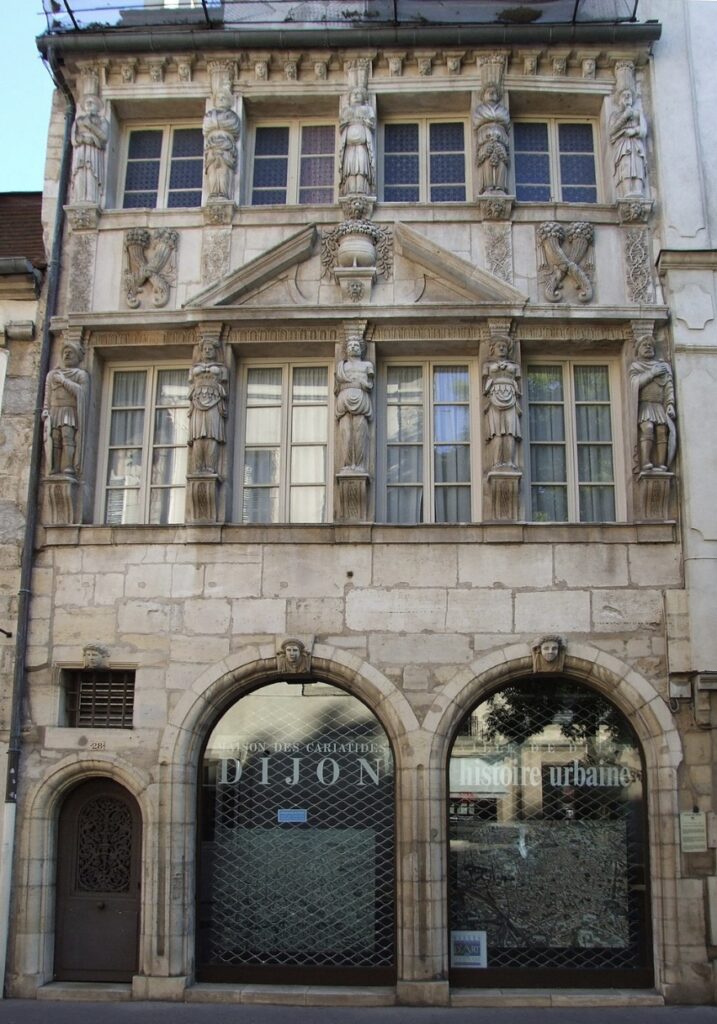
12. Darcy Garden (Jardin Darcy)
- Date: 19th century (1880).
- Description: A public garden designed by Félix Vionnois, it is one of the oldest in Dijon and features a statue of the bear Pompon, symbolizing the city.
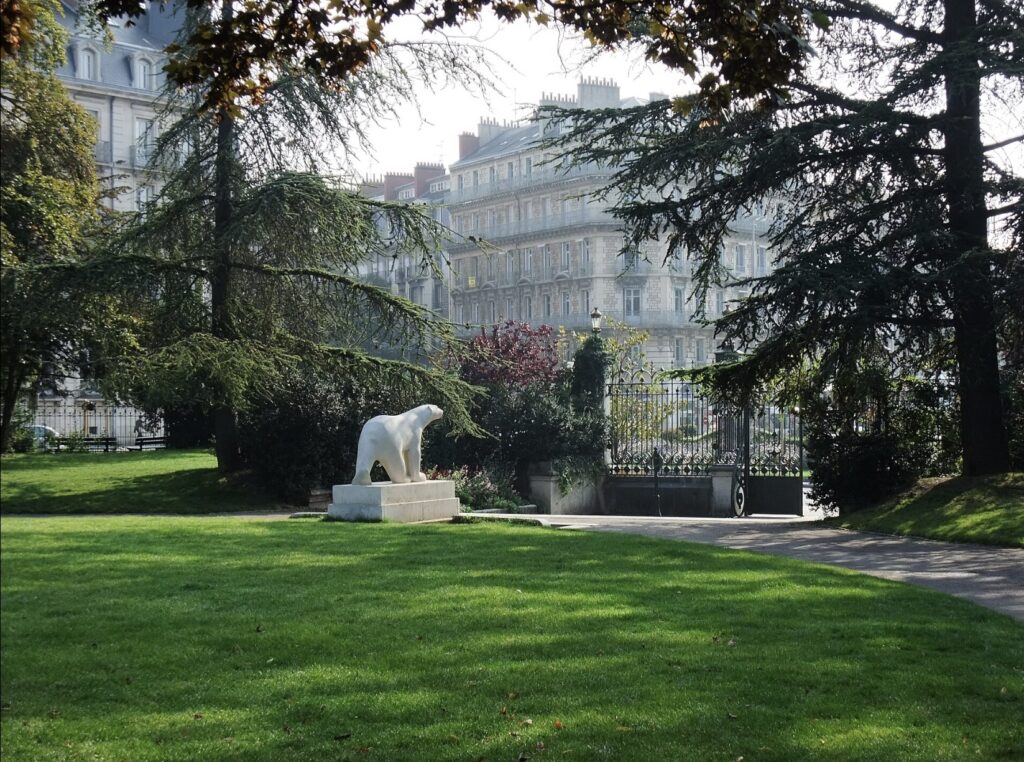
13. Philippe le Bon Tower (Tour Philippe le Bon)
- Date: 15th century (completed in 1460).
- Description: Part of the Palace of the Dukes, this tower offers panoramic views of Dijon from the top after climbing its 316 steps.
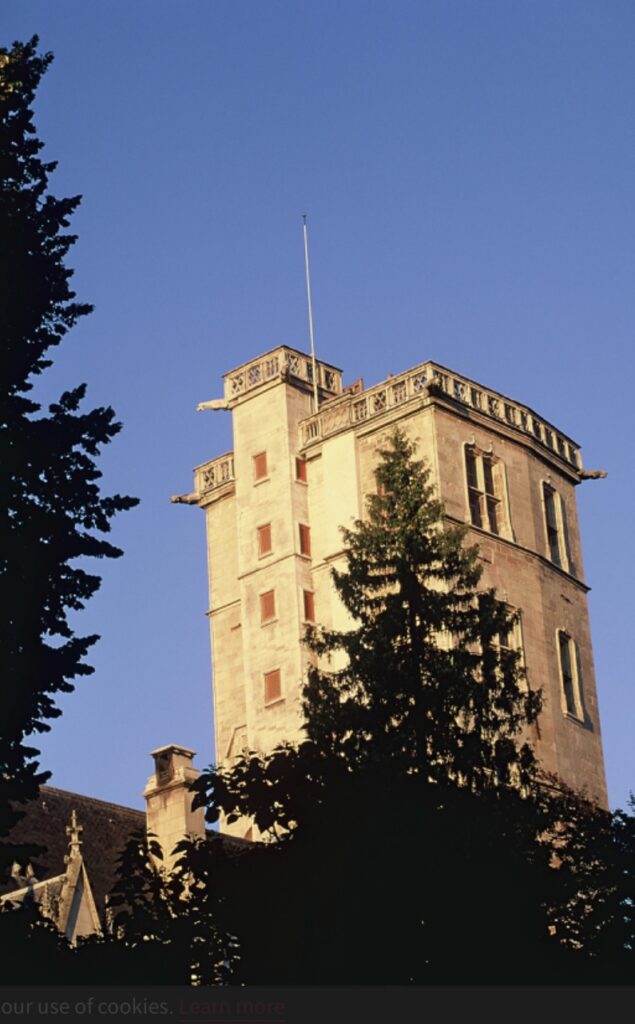
14. The Dijon Opera (Grand Théâtre de Dijon)
- Date: 19th century (1828).
- Description: A neoclassical theater that hosts a variety of performances, including operas, ballets, and concerts.
15. Museums
- Musée Rude: Dedicated to the works of François Rude, a 19th-century sculptor, located in a former church.
- Musée Magnin: Housed in a beautiful 17th-century mansion, this museum features a collection of French, Flemish, and Italian art.
These monuments and attractions make Dijon a captivating destination, offering a deep dive into France’s medieval and Renaissance history, as well as its contributions to art, culture, and gastronomy.
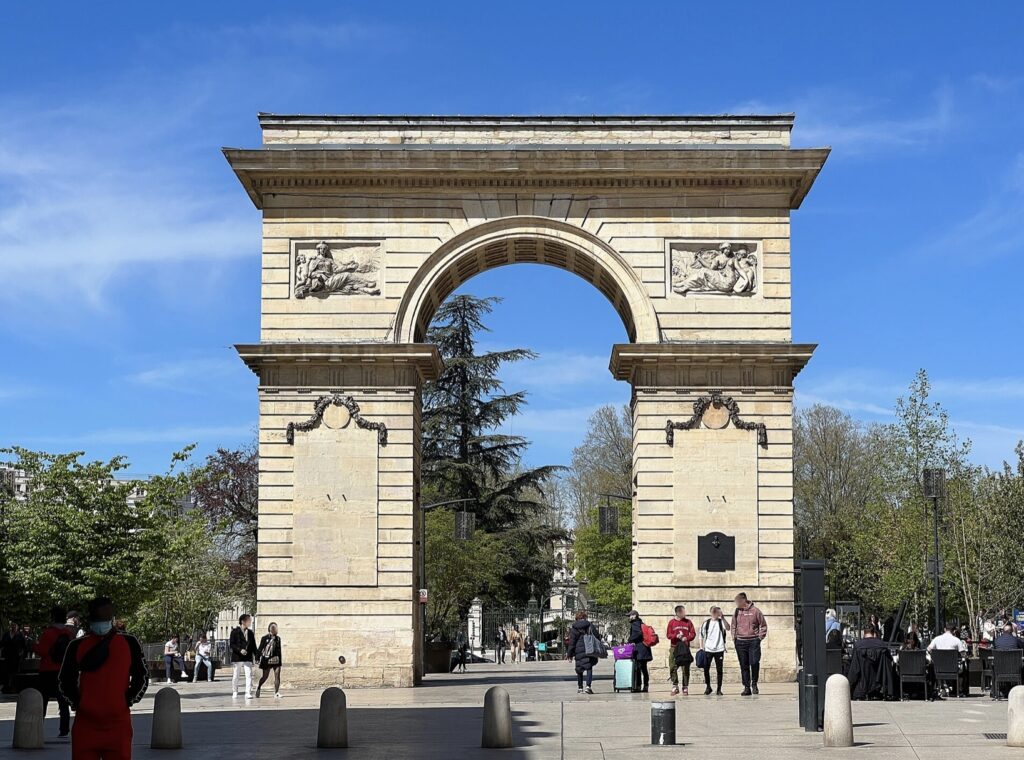
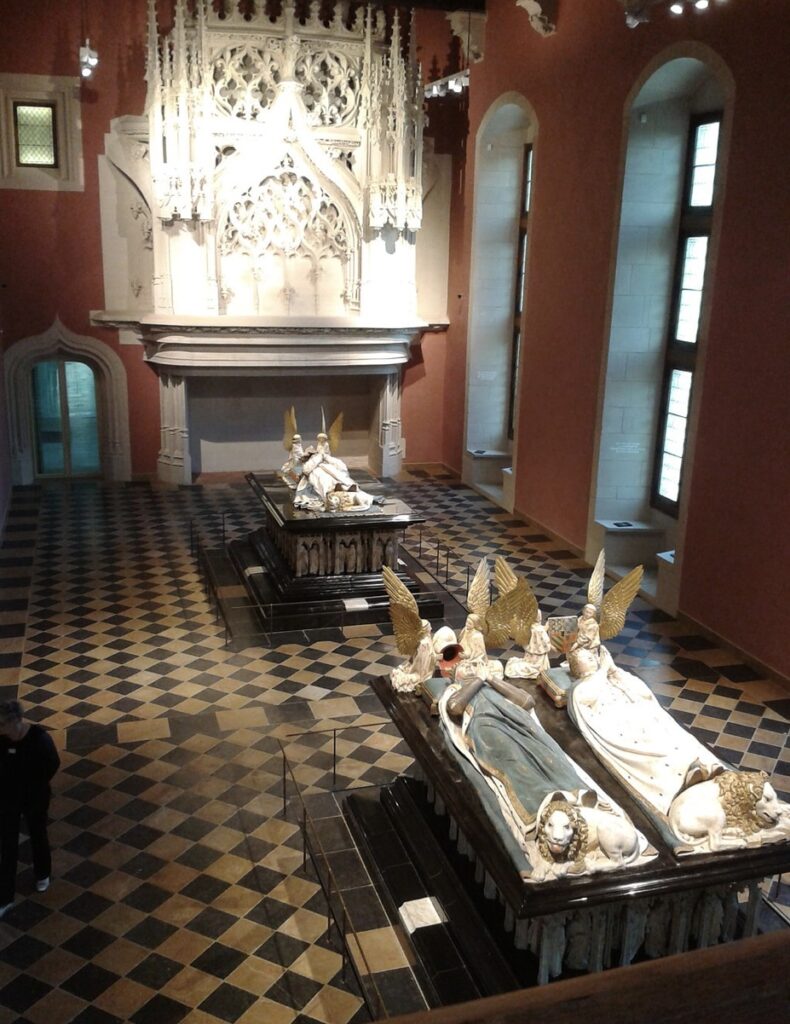
The market in Dijon, known as Les Halles de Dijon, is a vibrant and essential part of the city’s culinary and cultural life. This market is not only a hub for fresh local produce but also a significant architectural landmark, reflecting the city’s deep-rooted gastronomic traditions. The market hall was designed in the late 19th century, with its construction completed in 1873. The design is attributed to Gustave Eiffel, the famous architect and engineer best known for the Eiffel Tower.
- Market Days: The market is typically open on Tuesday, Thursday, Friday, and Saturday mornings. Saturday is the busiest and most vibrant day.
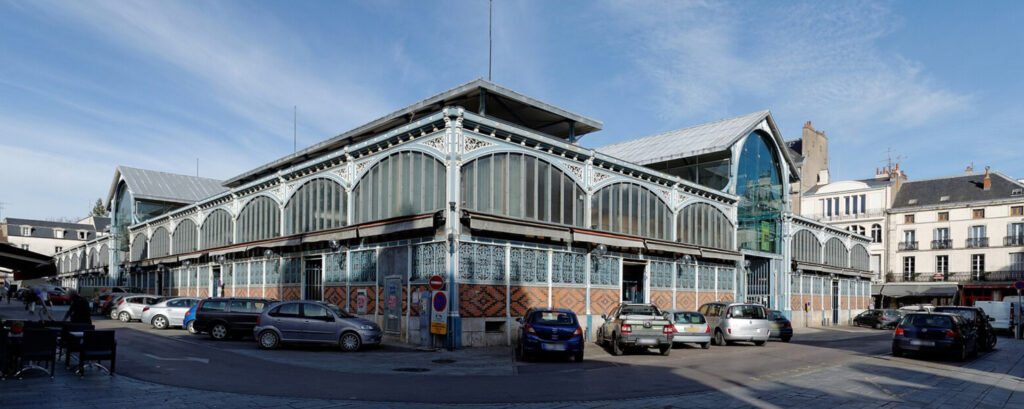
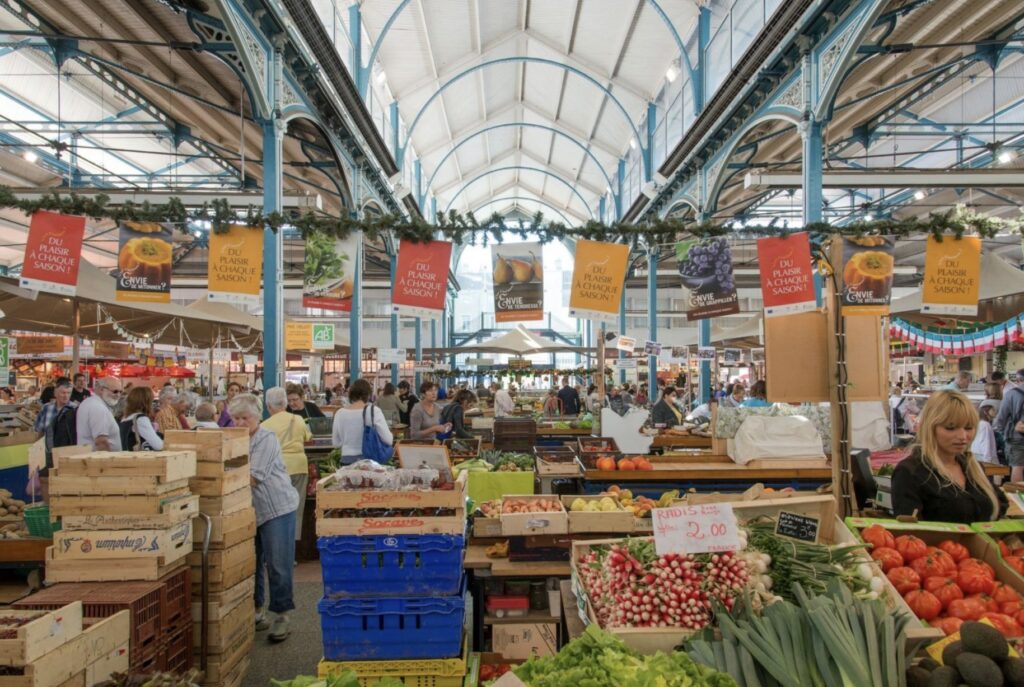
Here’s a two-day itinerary for exploring Dijon, France, that combines the city’s historical sights with its renowned local food scene.
Day 1: Exploring Historical Dijon
Morning
- Start at Place de la Libération
- What to Do: Begin your day at this iconic square, surrounded by the impressive facades of the Palace of the Dukes of Burgundy. Enjoy the atmosphere and take some photos.
- Breakfast: Grab a croissant and coffee at one of the nearby cafes like Maison Millière, a quaint 15th-century building, before your exploration.
- Visit the Palace of the Dukes and Estates of Burgundy
- What to Do: Explore the Musée des Beaux-Arts, located within the palace. The museum’s collection includes everything from medieval art to contemporary works.
- Time: 1.5–2 hours.
- Climb the Philippe le Bon Tower
- What to Do: Climb the 316 steps to the top of the tower for a panoramic view of Dijon. It’s a great way to get your bearings and see the city’s layout.
- Time: 45 minutes.
Lunch
- Lunch at Chez Léon or Les Oenophiles
- What to Eat: Savor classic Burgundian dishes such as œufs en meurette (poached eggs in red wine sauce) or boeuf bourguignon. Pair your meal with a local wine, like a Burgundy Pinot Noir.
- Time: 1.5 hours.
Afternoon
- Explore the Church of Notre-Dame
- What to Do: Visit this 13th-century Gothic church, famous for its gargoyles and the Chouette (Owl) carving, which is a symbol of good luck. Don’t forget to touch the owl with your left hand for a little extra luck.
- Time: 45 minutes.
- Stroll through the Antiquaires District
- What to Do: Wander through the medieval streets lined with antique shops and historical buildings. It’s a great place for souvenir shopping or just enjoying the historic atmosphere.
- Visit the Well of Moses
- What to Do: Head to the outskirts of the city to see this masterpiece by Claus Sluter, located in the former Carthusian monastery of Champmol.
- Time: 1 hour.
Evening
- Dinner at Le Pré aux Clercs
- What to Eat: Enjoy a refined dining experience at this Michelin-starred restaurant. Try dishes that highlight the region’s ingredients, such as poulet de Bresse or a tasting menu featuring local specialties.
- Time: 2 hours.
- Evening Walk at Place Darcy and Darcy Garden
- What to Do: End your evening with a leisurely stroll through Darcy Garden, enjoying the serene environment and the illuminated fountain.
- Time: 30 minutes.
Day 2: Cultural Immersion and Gastronomy
Morning
- Breakfast at La Maison des Cariatides
- What to Eat: Start your day with a delicious breakfast in this beautiful historical setting, with a selection of pastries, fresh fruit, and coffee.
- Visit the Dijon Cathedral (Saint-Bénigne Cathedral)
- What to Do: Explore this Gothic cathedral, including its crypt, one of the oldest Christian sites in Burgundy.
- Time: 1 hour.
- Explore the Market Hall (Les Halles de Dijon)
- What to Do: Visit this bustling market designed by Gustave Eiffel, where you can see and taste local products like Dijon mustard, cheese, and meats. This is the perfect place to pick up some local delicacies to take home.
- Time: 1.5 hours.
Lunch
- Lunch at La Maison des Cariatides
- What to Eat: Savor a meal that combines traditional Burgundian ingredients with modern culinary techniques. Try dishes like escargots de Bourgogne or jambon persillé (ham with parsley in aspic).
- Time: 1.5 hours.
Afternoon
- Visit the Museum of Burgundy Life (Musée de la Vie Bourguignonne)
- What to Do: Learn about the traditional lifestyle and customs of the Burgundy region. The museum offers fascinating insights into the rural and urban life of Dijon’s past.
- Time: 1 hour.
- Visit the Museum of Sacred Art (Musée d’Art Sacré)
- What to Do: Explore this museum housed in the Church of Sainte-Anne, displaying religious artifacts from the region.
- Time: 1 hour.
- Leisurely Walk through Jardin Botanique de l’Arquebuse
- What to Do: Enjoy a relaxing stroll in this beautiful botanical garden, which also features an arboretum and a small museum of natural history.
- Time: 1 hour.
Evening
- Dinner at Loiseau des Ducs
- What to Eat: End your visit with an elegant dinner at this Michelin-starred restaurant. The menu offers a modern take on classic Burgundian dishes, often using local ingredients and pairing them with fine wines from the region.
- Time: 2 hours.
- Final Evening Walk
- What to Do: Take a final evening walk around the historical center, enjoying the ambiance of the city at night. You can revisit your favorite spots or simply enjoy a peaceful stroll.
This itinerary offers a balance of exploring Dijon’s rich history and indulging in its famous culinary scene, providing a memorable experience over two days.

